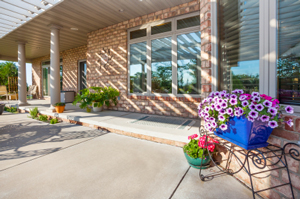In Business Since | License #
In Business Since | License #


A well-designed solar room has overhangs or other details that block the sun’s rays and prevent overheating in summer. In winter, rays enter the room unobstructed because of the sun’s low trajectory.
You don't have to be an energy expert to know something about passive solar heating. Just think back to the last time left your car parked in the sun – and the blast of heat you felt when you opened the door. With the right design features, passive solar heating can provide a significant amount of heat for a house during cold weather. Incorporating passive solar design features into a house is a great way to save energy and money, while also helping to cut fossil fuel use along with carbon emissions.
To see if your home is a candidate for passive solar heating, contact your local Dr. Energy Saver today! We offer home energy audits to pinpoint energy inefficiencies and compile a game plan for necessary improvements.
There are a few basic conditions that must be met for a house to "score" energy savings because of passive solar heating. For starters, the house needs to have a generous amount of insulated glass that faces south (or close to due south), to admit sunlight into the interior of the structure. Secondly, it's good to have a dark-toned floor or wall that will get direct sunlight for an extended period of time. It's better for this absorbing surface to be dense and dark-toned rather than light in weight and color. Masonry floors and brick walls are good examples of "thermal mass" that can absorb a good amount of heat -- and then release it gradually after the sun goes down. Finally, passive solar heating works best as an energy-saving technique when the building envelope is well-sealed and well-insulated. Basic air-sealing and insulation upgrades will make the most of the sun's heat that you are able to capture and store.
The same sunlight that's welcome inside the house during cold weather can be a curse on hot summer days. That's why it's essential to incorporate shading details in any passive solar design. Awnings, roof overhangs, and exterior shutters are popular devices to limit the amount of summer sun that warms the house. Since the summer sun is higher in the sky than the winter sun, these shading devices don't need to be very substantial.
If you think your home gets enough sunlight for passive solar heating solutions, or if you'd like to find out more, schedule a home energy audit with Dr. Energy Saver. Our dealers are located across the country, and every one enjoys interacting with customers and finding the best energy-saving products for their homes.
Looking for a price? Get a no cost, no obligation free estimate.